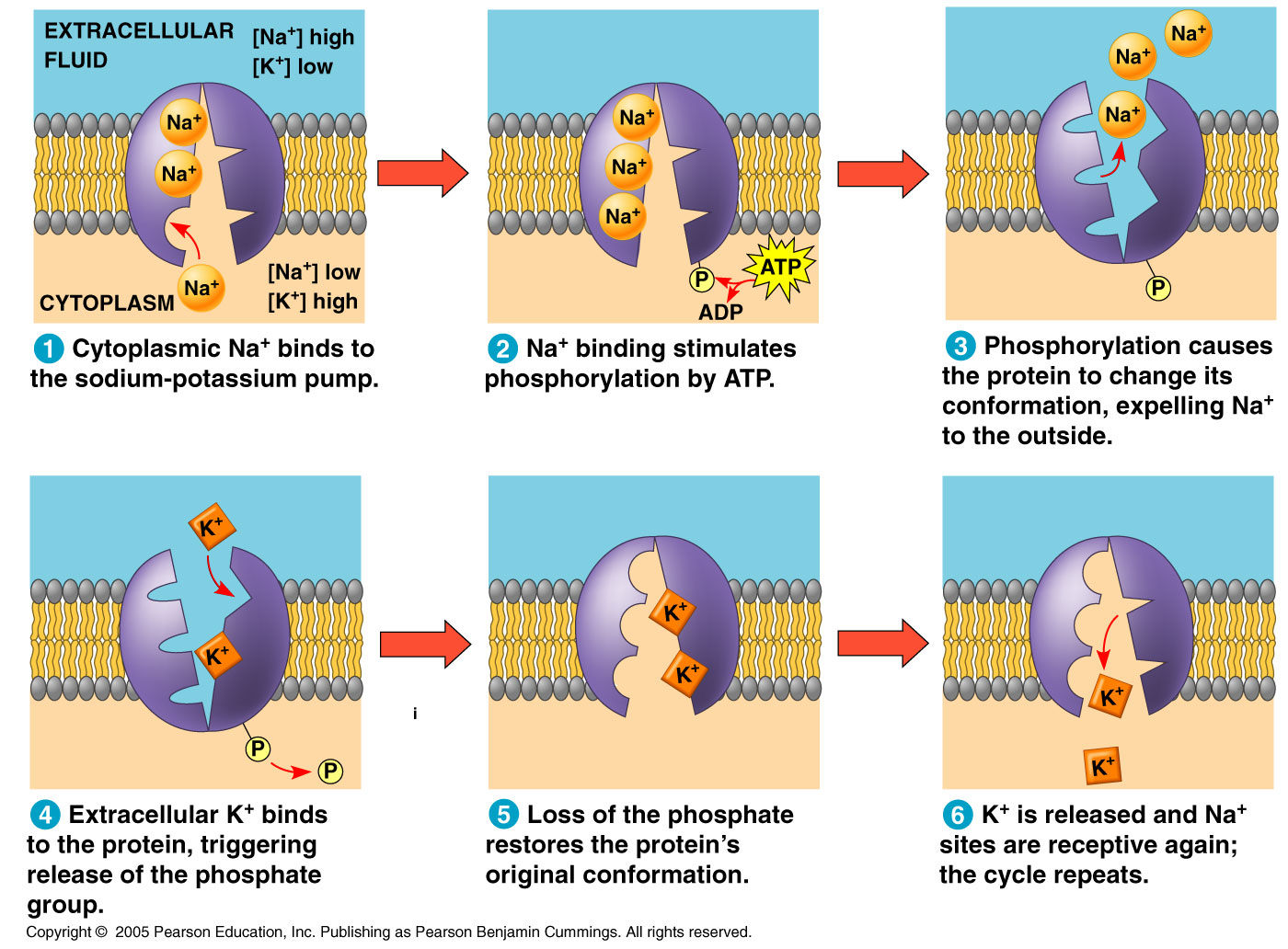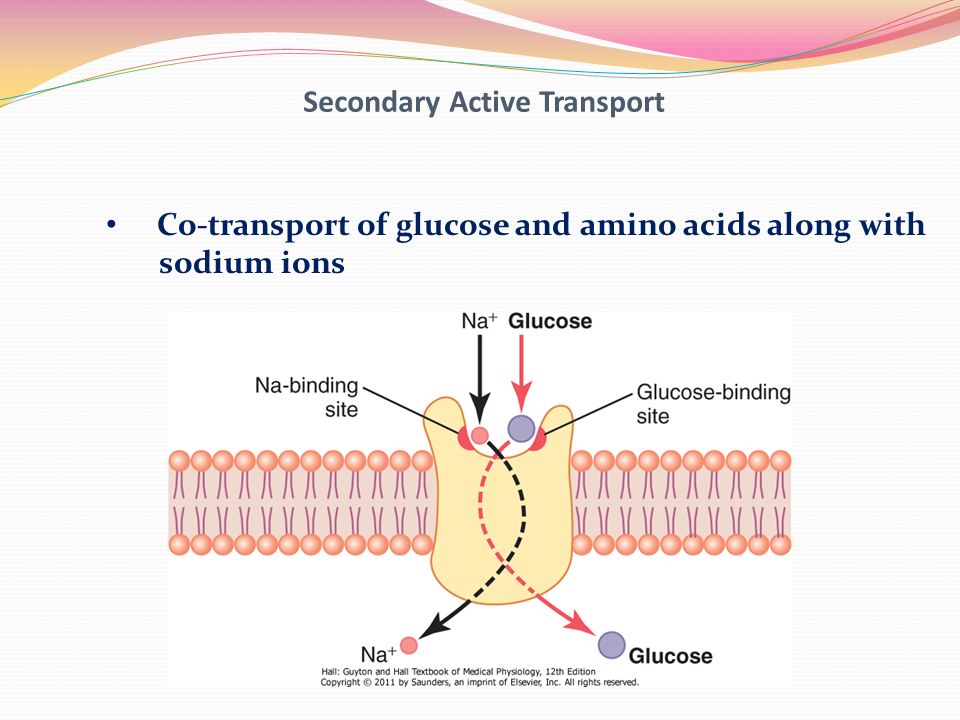What is the movement of substances across the plasma membrane against a concentration gradient that requires energy?
1 Answer
Jan 8, 2018
Explanation:
Active transport is movement of molecules & ions against their concentration or electrochemical gradient which means from an area of lower concentration to an area of higher concentration by consuming energy. In this case, carrier proteins help them to accomplish their task.
Active transport basically require two things
Types of active transport
- Primary active transport:
It is transport of ions & molecules against their concentration by using the energy provided by hydrolysis of#"ATP"# .
First of all the ion or molecule binds to a carrier protein at binding site.#"ATP"# released by mitochondria is hydrolyzed forming#"ADP"# and#"Pi"# . This phosphate binds to the carrier protein which then changes its conformation(structure) a bit. The molecule or ion is thus transferred from its crowded area to the one with low concentration. And the bound phosphate then is released from carrier protein causing it to flip back to its previous shape.
Example:
Sodium-potassium#(Na^+# /#K^+)# pump.

- Secondary active transport:
the co-transporter carrier proteins i.e sympoters and antipoters are used. In this case,#"ATP"# is not used as an energy source.
In a nutshell, one solute molecule is transported against its concentration gradient by utilizing the energy generated by gradient of another solute which is transported along its concentration gradient.
Example:
Glucose ,amino acids and sodium ions are reabsorbed from kidney tubules via secondary active transport.

Hope it helps...

